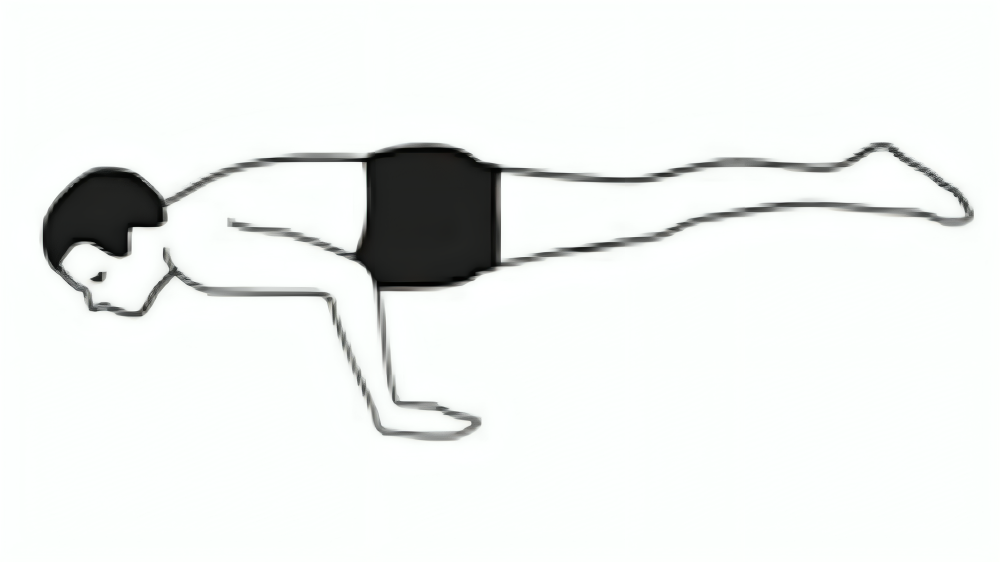
What is Mayurasana?
In Sanskrit, “Mayura” means peacock, and “asana” means pose, so this yoga pose literally translates to “Peacock Pose.” Just like a peacock stands tall and proud, this pose requires strength, grace, and balance. It’s a forearm balance where your body hovers parallel to the floor, supported by your arms. But don’t let that scare you! It’s not just for advanced yogis—anyone can work towards it with practice.
How to Do Mayurasana
Preparation
Start in a kneeling position with your knees wide apart and your feet together. Place your hands on the floor in front of you with your fingers pointing toward your body. Your elbows should bend and press into your abdomen—this is key for the pose.
Positioning the Hands and Elbows
Make sure your fingers are spread out wide for stability. Your elbows should dig into your lower belly, just below your navel. This helps create the balance point for your body later in the pose.
Lift Your Legs and Chest
Begin to lean forward while pressing your hands firmly into the floor. Shift your body weight onto your arms and, slowly, lift your feet off the ground. At first, try lifting one leg at a time to get a feel for the balance.
Straighten Your Body
Once you’re comfortable with your feet off the floor, engage your core and try to stretch your legs straight behind you. Your body should now be parallel to the floor, hovering on your forearms. Keep your gaze slightly forward to maintain balance.
Hold and Breathe
Stay in the pose for a few breaths. It may feel wobbly at first, but with time, you’ll gain more control. Focus on keeping your body straight and your core engaged.
Slowly Exit the Pose
When you’re ready to come out of Mayurasana, gently lower your feet back to the ground and sit back on your heels, resting for a moment.
Benefits of Mayurasana
Strengthens Arms and Wrists
Since this is an arm-balancing pose, it helps to build strength in your arms, wrists, and shoulders. If you’re looking to improve upper body strength, this pose can help you achieve that over time.
Improves Digestion
One of the unique benefits of Mayurasana is its positive impact on digestion. By placing pressure on your abdomen, the pose stimulates the digestive organs. Many practitioners find it helps reduce bloating and can even improve metabolism.
Boosts Mental Focus
Like many balancing poses, Mayurasana requires concentration and mindfulness. Holding this position can enhance your mental clarity and focus, making it a great way to clear your mind after a long day.
Detoxifies the Body
The pressure applied to your belly can also help detoxify your system. The pose helps massage internal organs like the liver and kidneys, which aid in the body’s natural detoxification process.
Increases Core Strength
Your core muscles play a significant role in this posture. Engaging your abs to hold yourself steady will give your midsection a serious workout, helping to tone and strengthen your core.
Enhances Balance and Coordination
Mayurasana challenges your ability to balance on your forearms. With regular practice, you’ll develop better body awareness, balance, and coordination, which can benefit you in other yoga poses and daily activities
It’s Here Kapotasana how to do it and what are the benefits
FAQs
Q1: Can beginners do Mayurasana?
Yes! Beginners can start by building strength in the arms and core, and using modifications such as blocks or pillows to gradually work up to the full pose.
Q2: How long should I hold Mayurasana?
Try holding the pose for 3 to 5 breaths at first. As you gain strength, you can increase the duration.
Q3: What are some easier alternatives to Mayurasana?
Crow Pose (Bakasana) or Dolphin Pose are great alternatives to work on balance and arm strength before progressing to Mayurasana.
Q4: Are there any precautions for practicing Mayurasana?
Avoid this pose if you have wrist injuries or any abdominal issues. It’s always a good idea to consult with a yoga instructor if you’re unsure.

